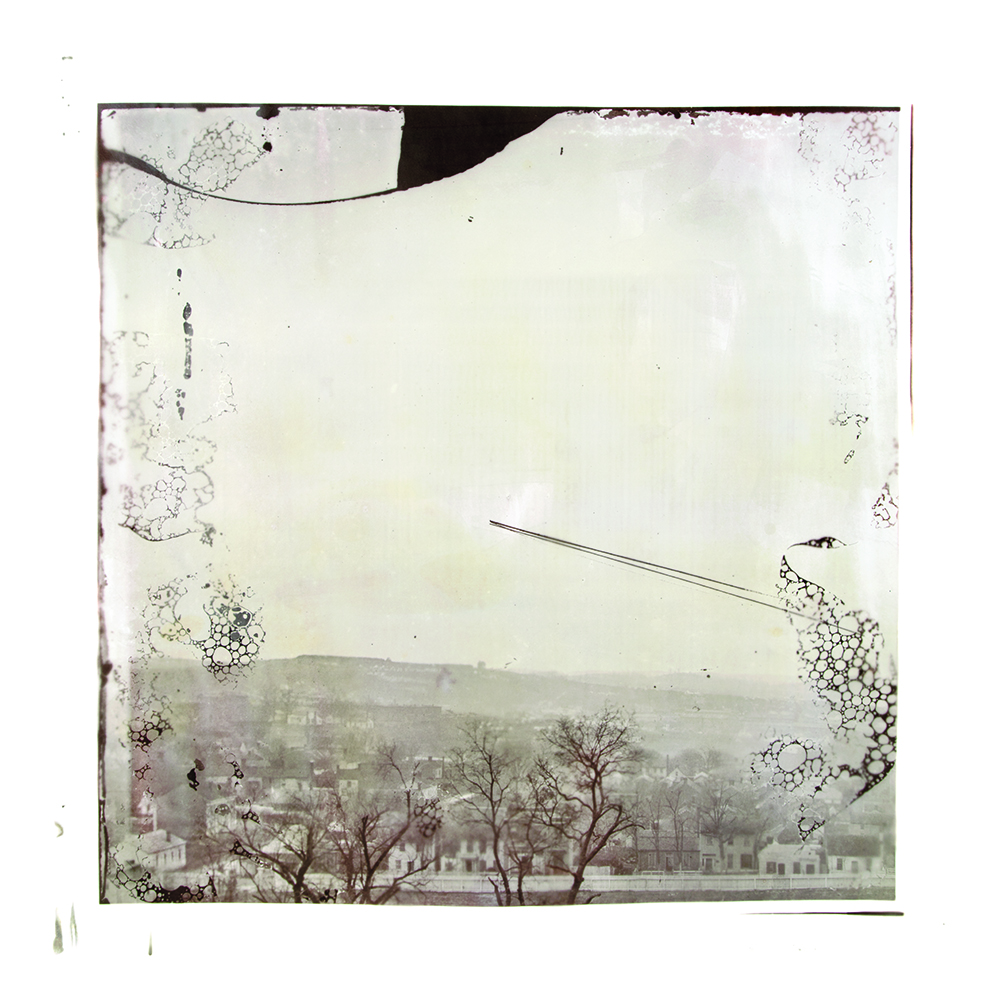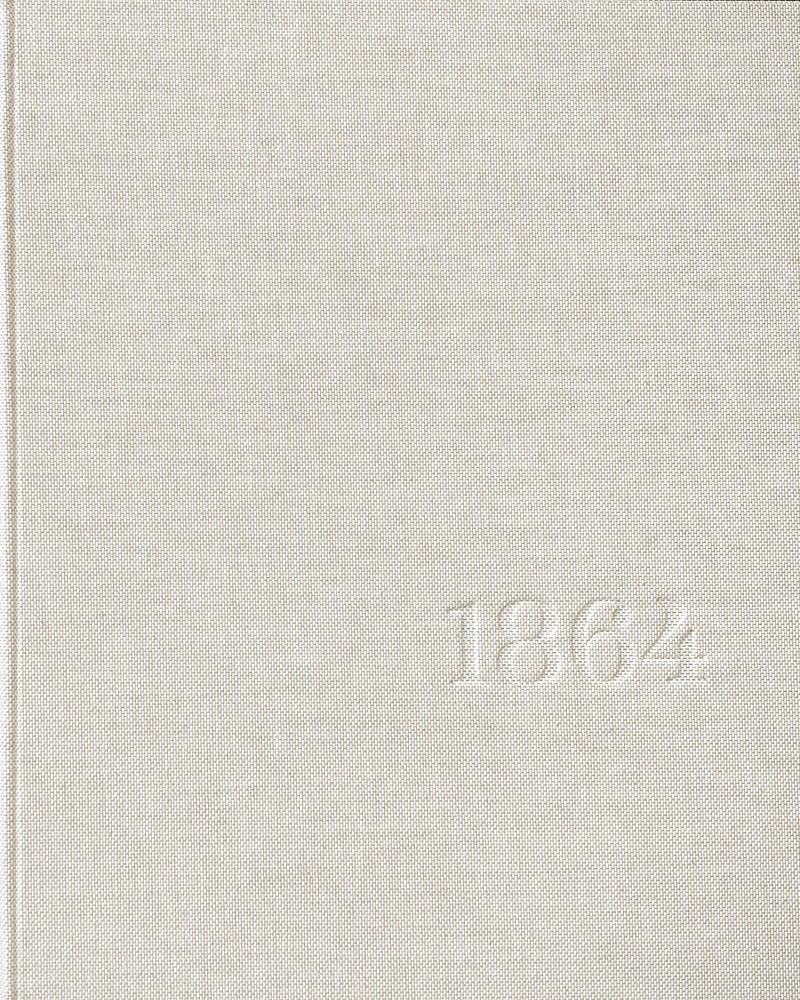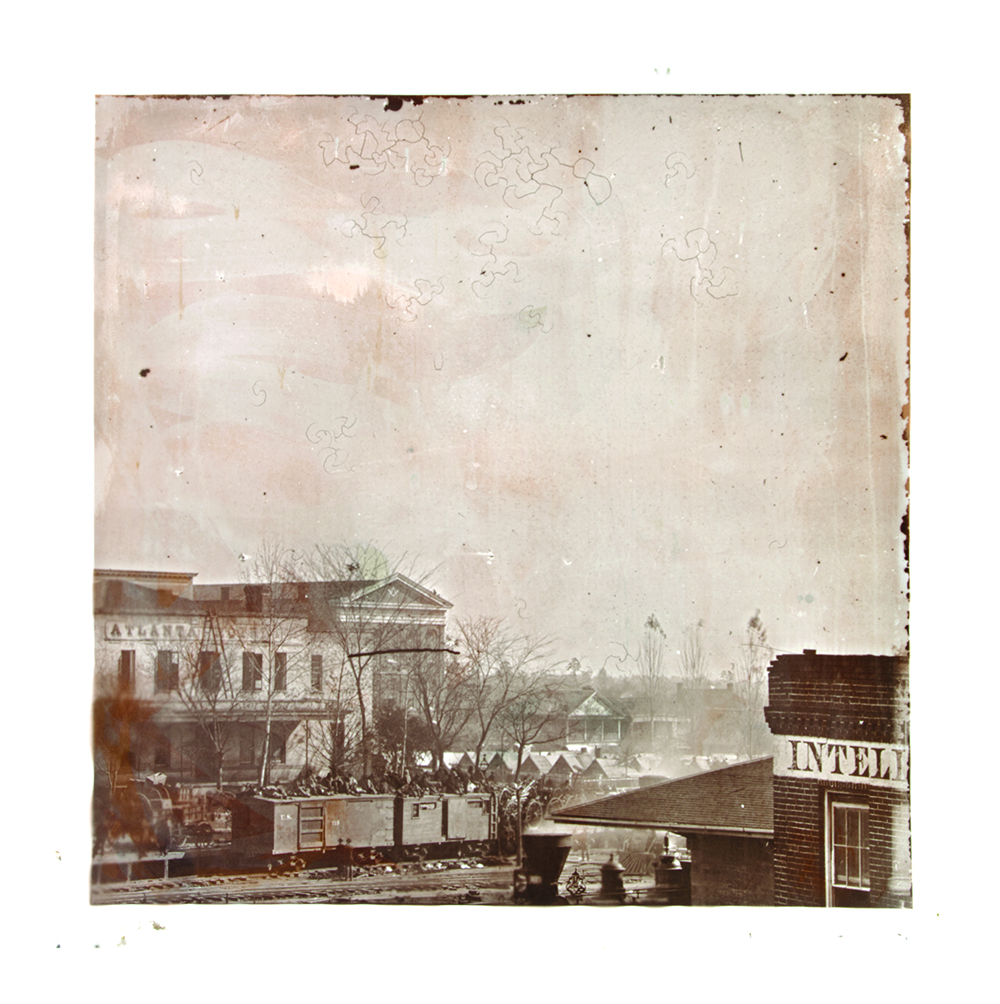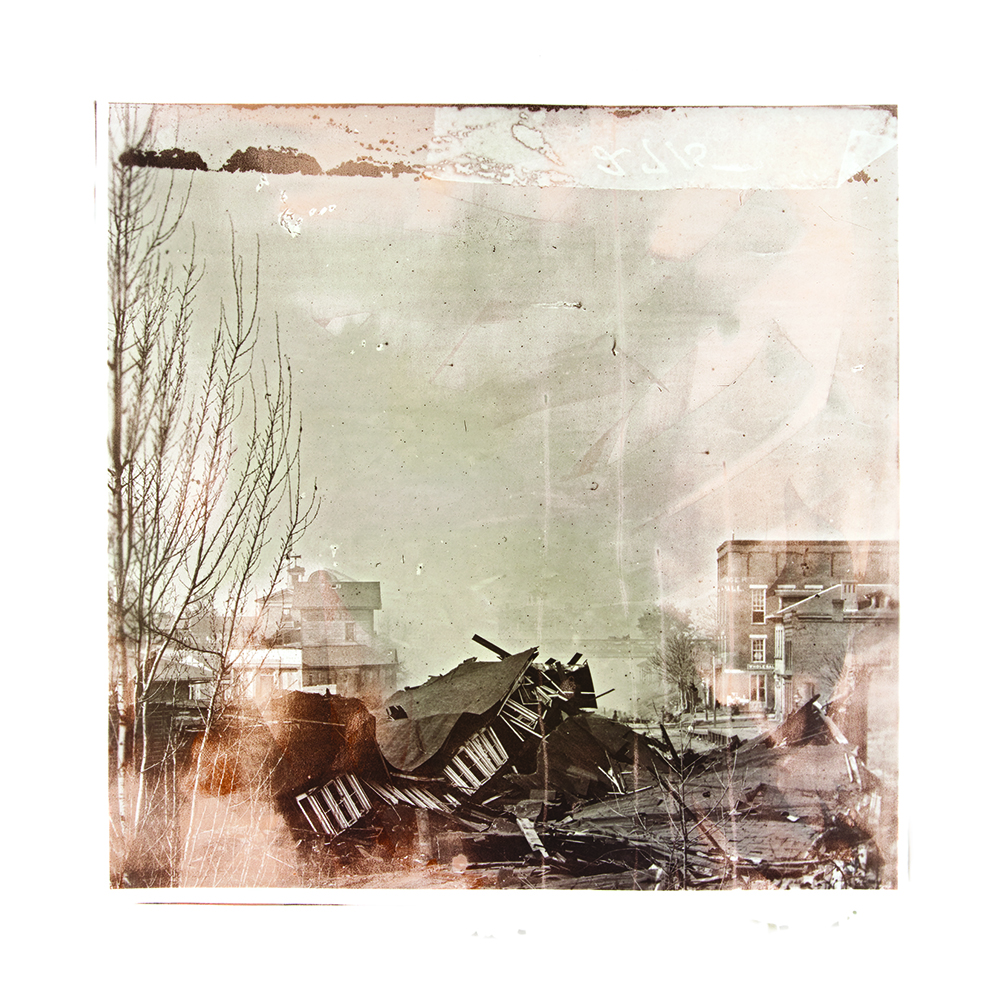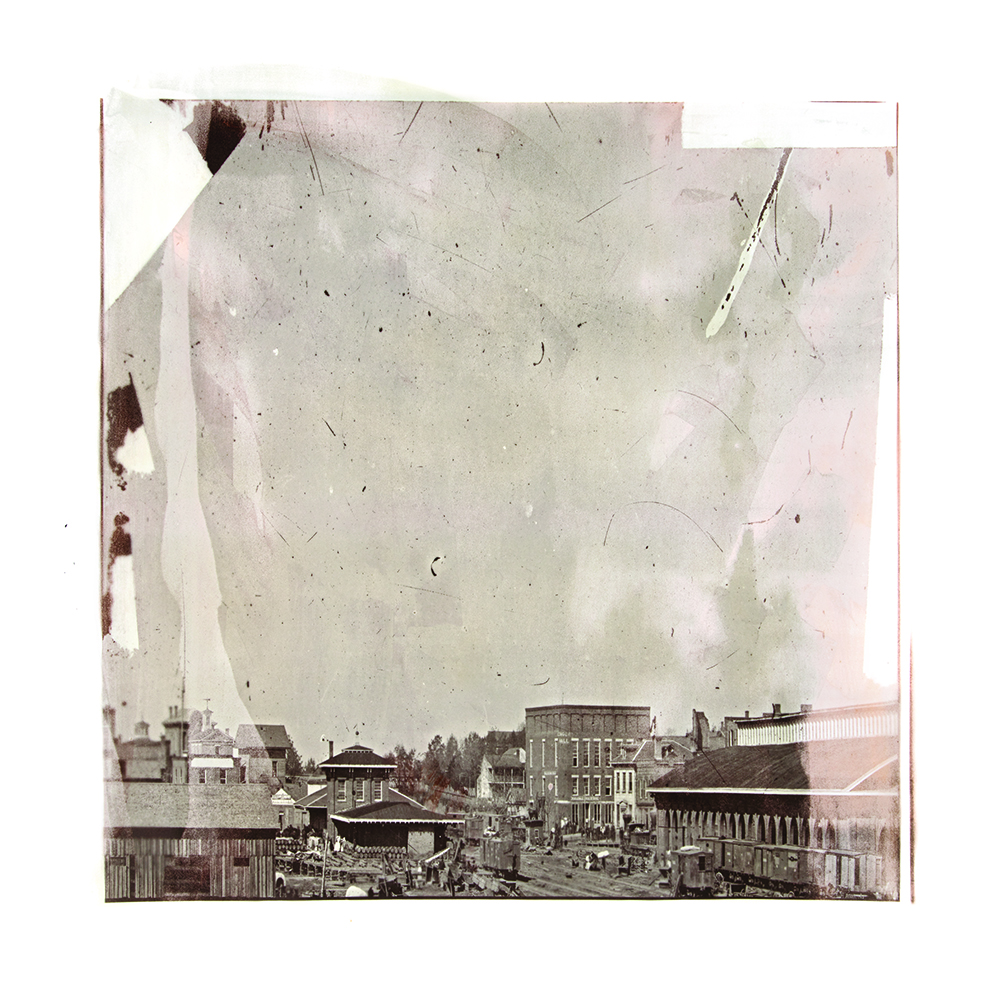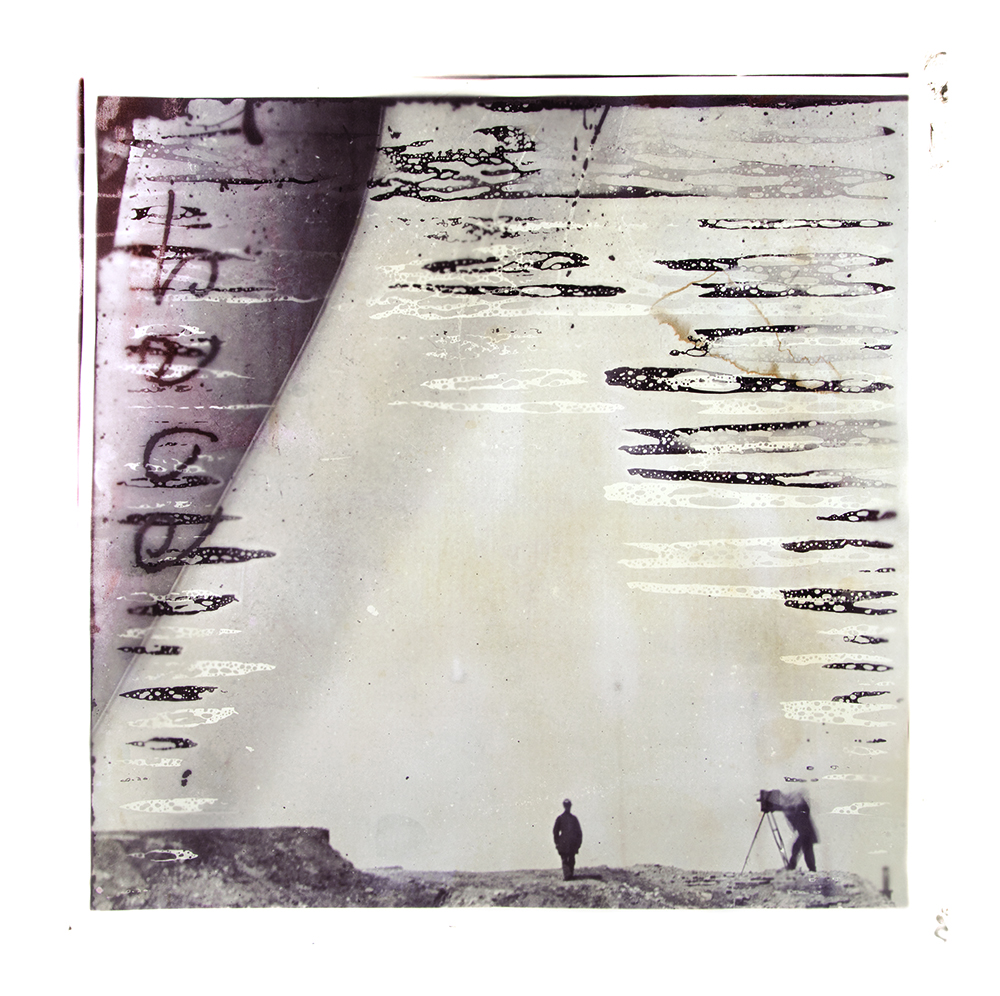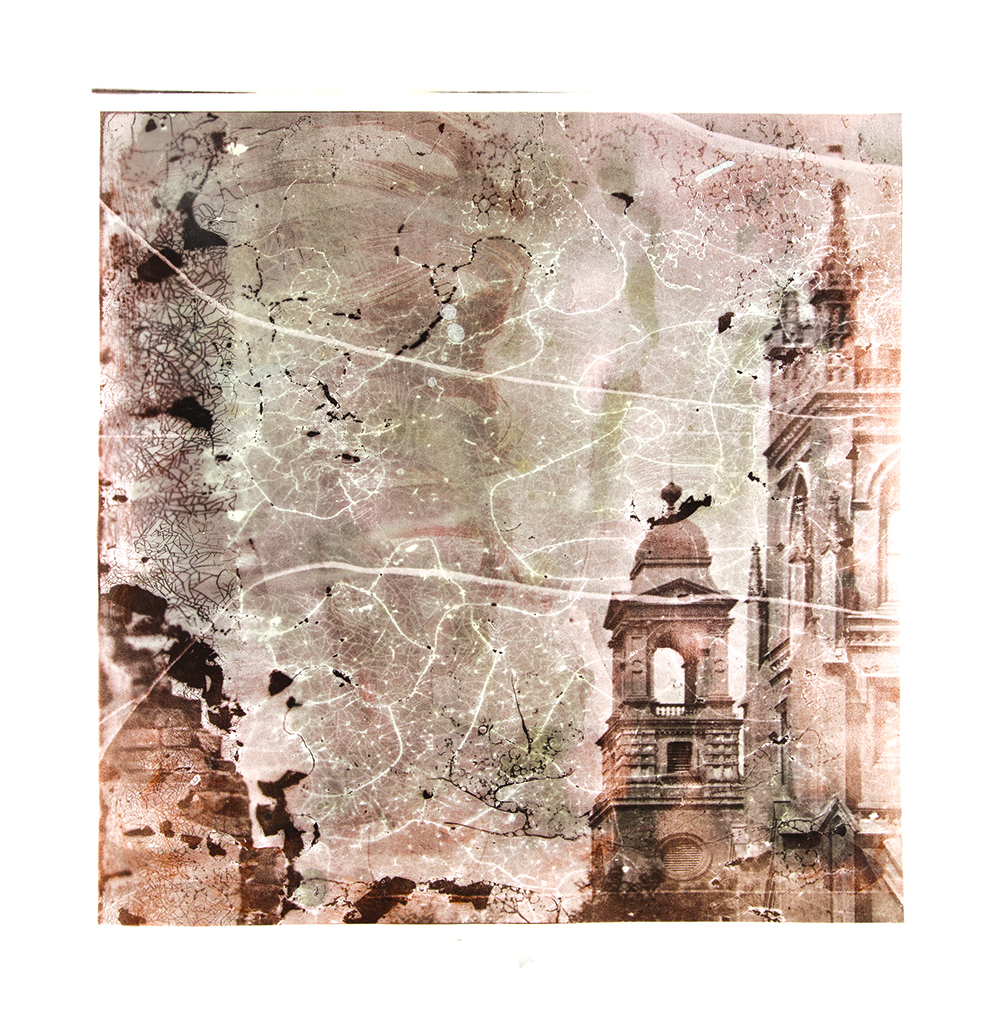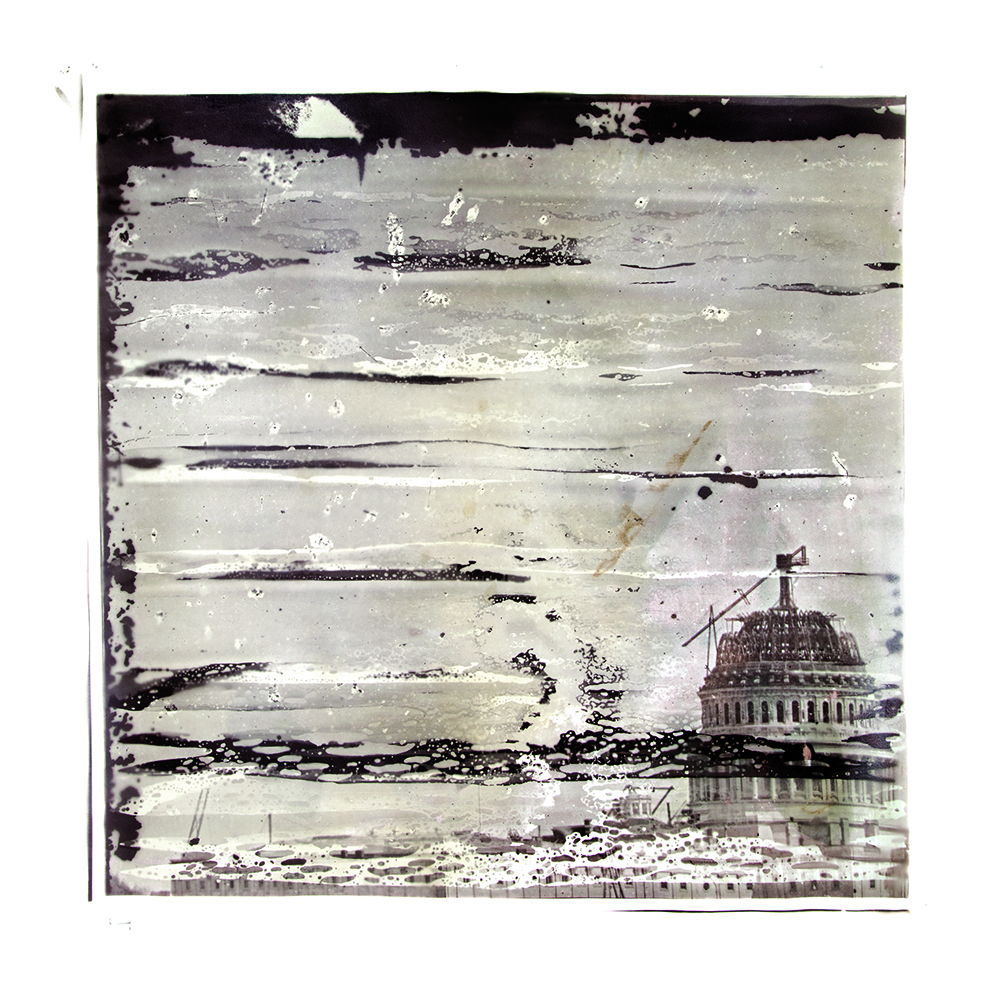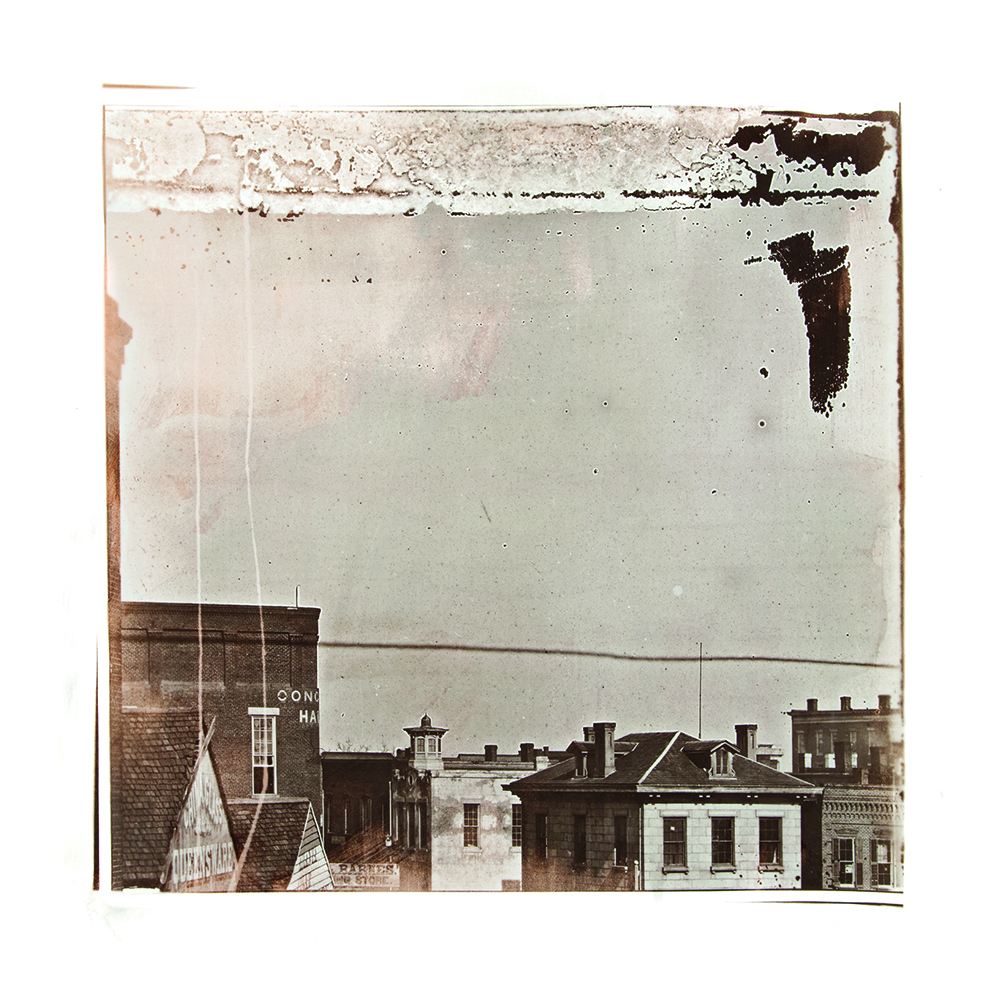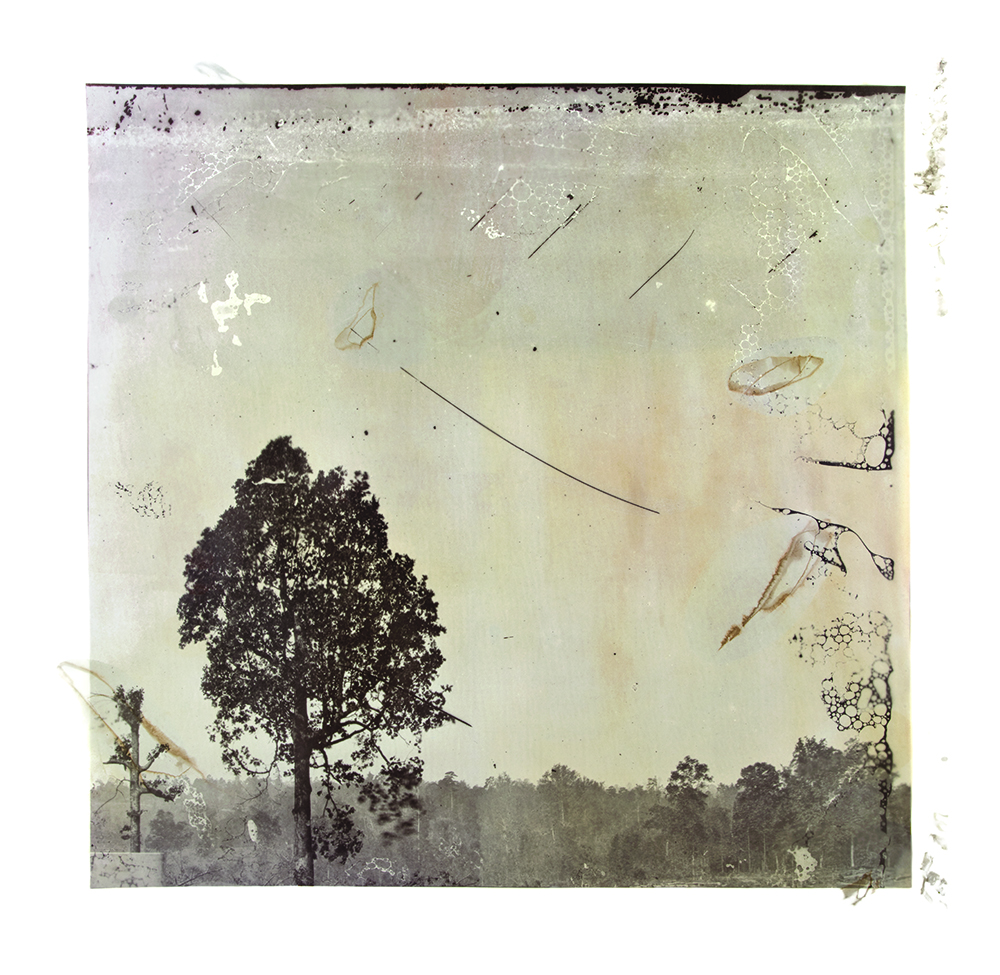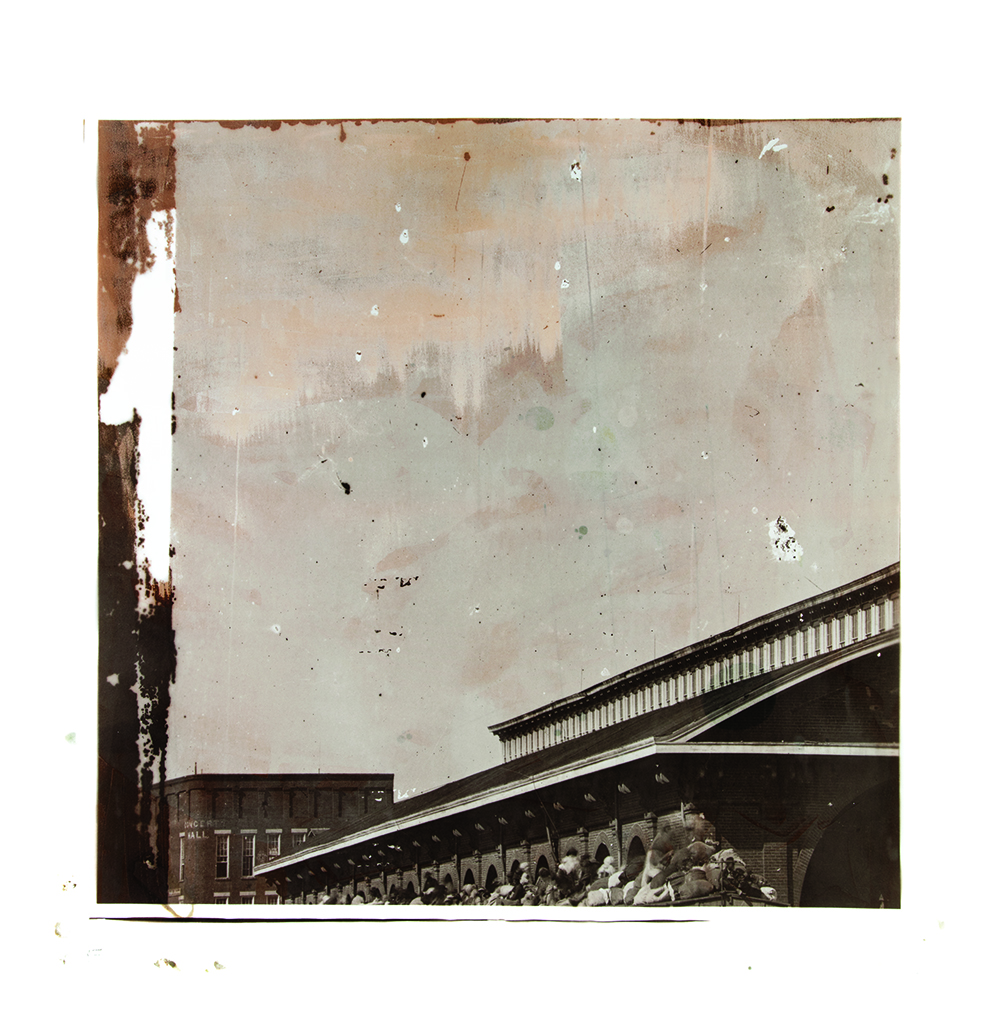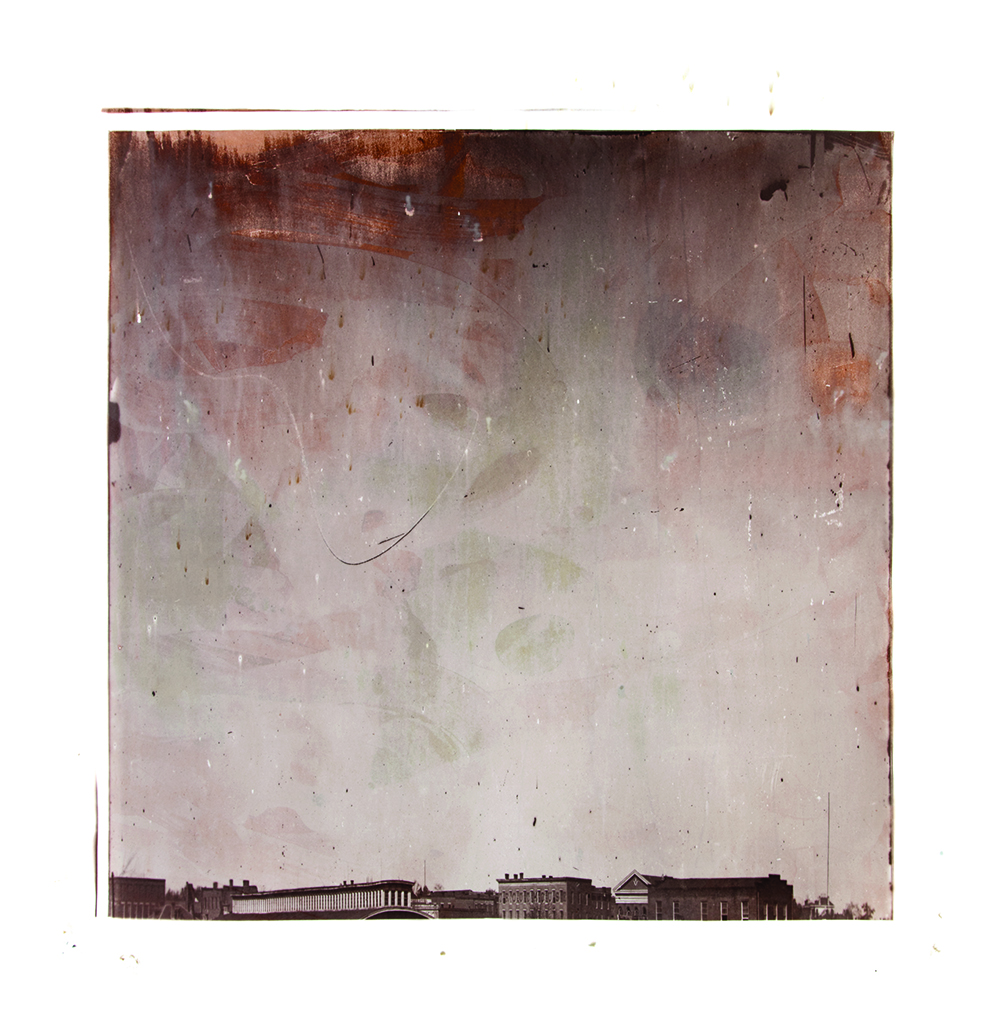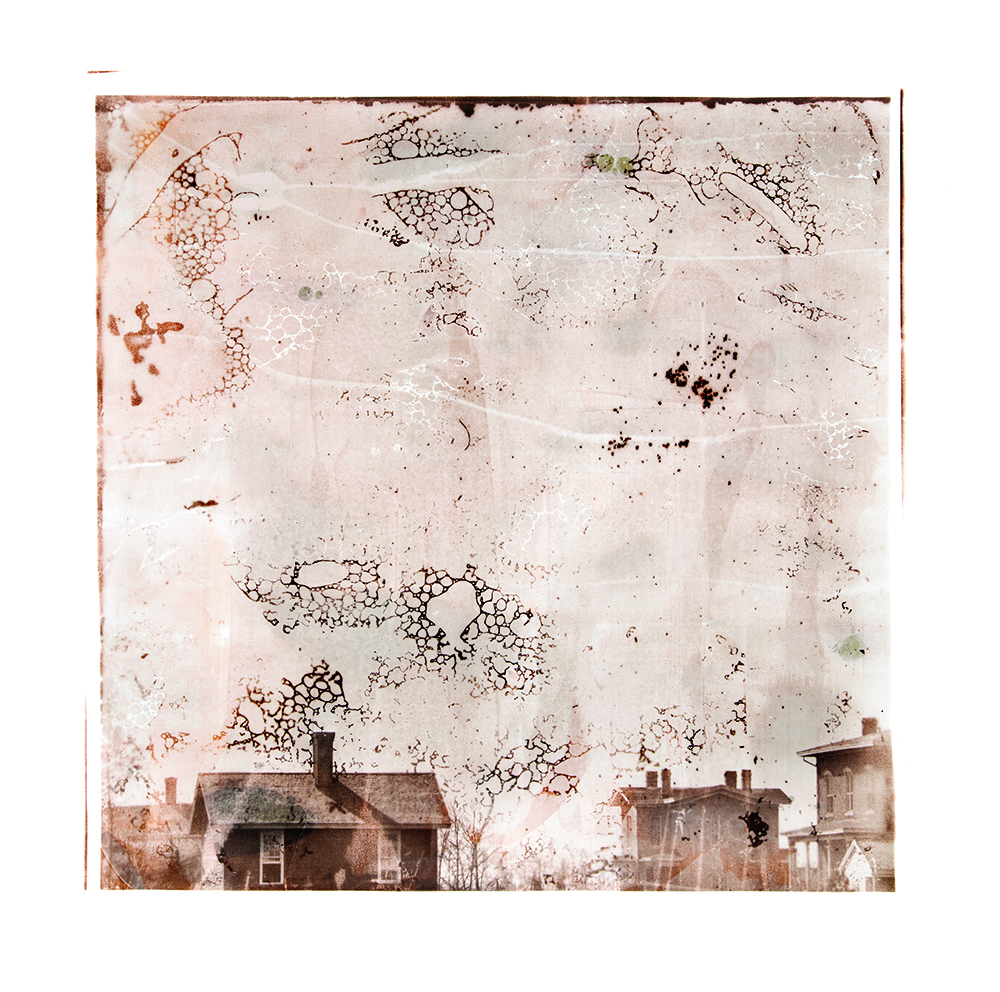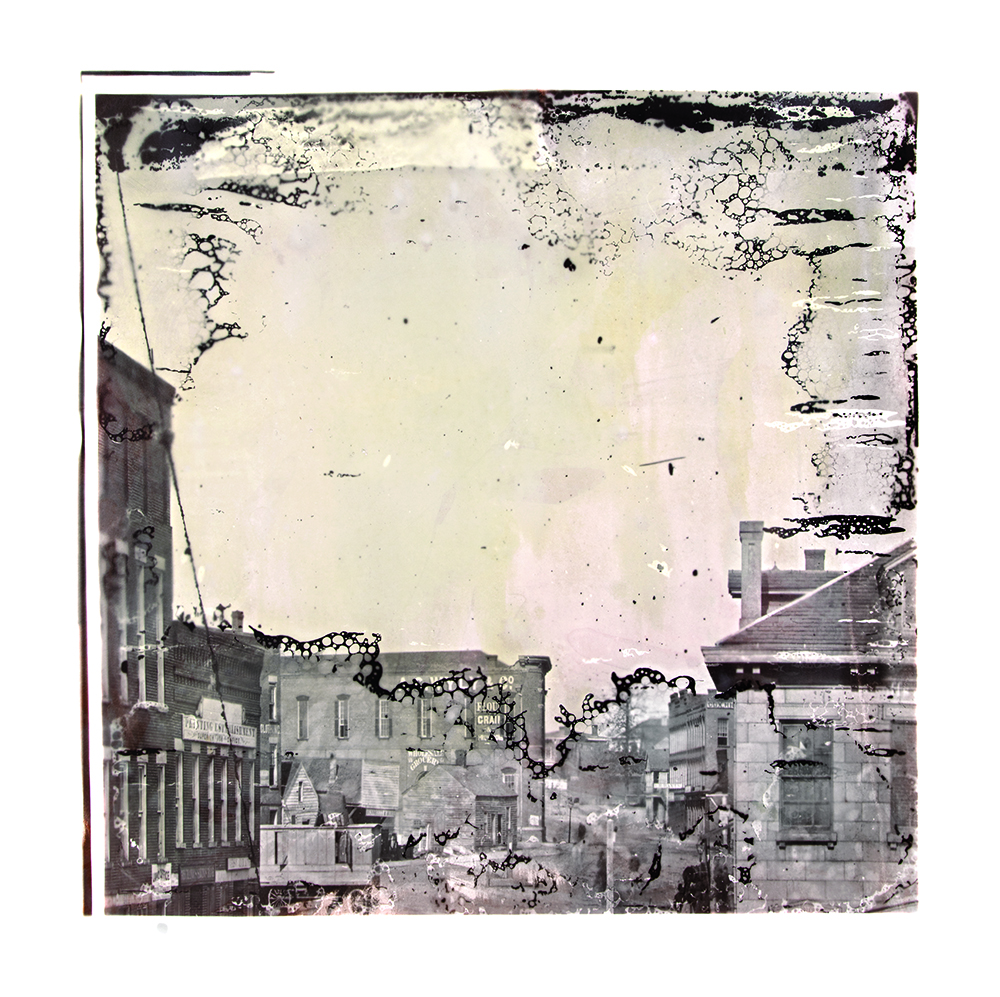Matthew Brandt: 1864
“Brandt has gone back to those source images housed at the Library of Congress and printed new photographs from Barnard’s images, while also incorporating the ingredients for peach pie — cinnamon, sugar, salt, butter, flour and peaches — into the albumen photo developing process.”
Los Angeles photographer, Matthew Brandt, is a bit of a rock star in the photography world, challenging our ideas about photographic materials. His methodologies where process and subject matter are stirred up into whole new ways of seeing and thinking about the image, open the door to possibility. In his well-celebrated series, Lakes and Reservoirs, Brandt immersed his negatives in the water of his subject matter, therefore allowing the actual subject to physically impact the final image. For the series, Pictures From Flint (Bridges Over Flint), he toned silver gelatin prints with Flint’s contaminated tap water to call attention to the impurities in the Flint, Michigan, water supply.
His new series, 1864, recreates George N. Barnard’s 19th century images of a devastated, post-Sherman Atlanta. Using source imagery housed at the Library of Congress, he makes new albumen photographs from Barnard’s images. “Fortifying the foundational ingredients of the 19th-century albumen print — egg whites, silver nitrate, and salt — with peaches, sugar, flour, cinnamon, and butter, Brandt plays with external assumptions about the South, at the same time revealing a complex understanding of the complicated history his project explores. Brandt began working on 1864 in early 2017, informed by a February visit to Atlanta (his first) and a fascination with the online catalog of the Atlanta Journal Constitution. Georgia’s reputation as the Peach State, now tenuous, calcified in the three decades following the Civil War. Brandt’s large scale photographs of the ruins of Union Depot, once situated between Pryor Street and Central Avenue, or Confederate Peachtree Street (then Whitehall), compress time, creating a symbolic conversation
at turns funny and reverent, and loaded with unexpected associations.” The result of these efforts was an exhibition at the prestigious Jackson Fine Art Gallery in Atlanta, GA, in 2017.
Yoffy Press has just released a new monograph of this work under the same title, 1864, with an essay by Essay by High Museum curator Gregory J. Harris. Beneath the lovely linen covers, there are 64 pages and 28 images. The book can be purchased here.
Work by Matthew Brandt is in the permanent collections of Metropolitan Museum of Art, New York; National Gallery of Art, Washington, DC; J. Paul Getty Museum, Los Angeles; Brooklyn Museum, New York; and the Los Angeles County Museum of Art, among others. Matthew Brandt was one of seven artists featured in the 2015 exhibition at the J. Paul Getty Museum, Los Angeles, Light, Paper, Process: Reinventing Photography. A solo exhibition of his work, Sticky/Dusty/Wet, was presented by the Columbus Museum of Art and traveled to the Virginia Museum of Contemporary Art in 2014. Brandt’s first monograph, Lakes and Reservoirs, co-published by Damiani and Yossi Milo Gallery, was released in Fall 2014. Brandt was born in California in 1982, received his BFA from The Cooper Union in New York and his MFA from UCLA. He currently lives and works in Los Angeles.
Brandt began working on 1864 in early 2017, informed by a February visit to Atlanta (his first) and a fascination with the online catalog of the Atlanta Journal Constitution. Fortifying the foundational ingredients of the 19th-century albumen print — egg whites, silver nitrate, and salt — with peaches, sugar, flour, cinnamon, and butter, Brandt plays with external assumptions about the South, at the same time evincing a complex understanding of the history his project excavates. Georgia’s reputation as the Peach State, now tenuous, calcified in the three decades following the Civil War. Brandt’s large scale photographs of the ruins of Union Depot, once situated between Pryor Street and Central Avenue, or Confederate Peachtree Street (then Whitehall), compress time, creating a symbolic conversation at turns funny and reverent, and loaded with unexpected associations.
1864
Brandt’s photographs of Atlanta are recreations on photographer George N. Barnard’s 19th-century images of a devastated Atlanta post-Sherman. Brandt has gone back to those source images housed at the Library of Congress and printed new photographs from Barnard’s images, while also incorporating the ingredients for peach pie — cinnamon, sugar, salt, butter, flour and peaches — into the albumen photo developing process. It is a continuation of Brandt’s fascinating incorporation into the developing process, of some physical trace of his subjects: the actual source water in his portraits of “Lakes and Reservoirs” or the tears of his subjects incorporated into their portraits.
In 1864, Matthew Brandt recreates George N. Barnard’s 19th century images of a devastated, post-Sherman Atlanta. Using source imagery housed at the Library of Congress, he makes new albumen photographs from Barnard’s images. Fortifying the foundational ingredients of the 19th-century albumen print — egg whites, silver nitrate, and salt — with peaches, sugar, flour, cinnamon, and butter, Brandt plays with external assumptions about the South, at the same time revealing an understanding of the complex history his project explores.
Posts on Lenscratch may not be reproduced without the permission of the Lenscratch staff and the photographer.
Recommended
-
Luther Price: New Utopia and Light Fracture Presented by VSW PressApril 7th, 2024
-
Artists of Türkiye: Sirkhane DarkroomMarch 26th, 2024
-
European Week: Sayuri IchidaMarch 8th, 2024
-
European Week: Steffen DiemerMarch 6th, 2024
-
Rebecca Sexton Larson: The Reluctant CaregiverFebruary 26th, 2024

